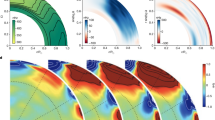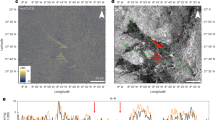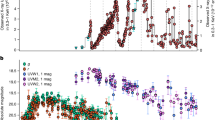Abstract
THE first step in gleaning cosmological information from quasars is to determine their spatial distribution and luminosity function, based on well defined, complete samples1,2. This idealised situation applies to a great extent in the case of radio quasars. For the majority of quasars, which are radio quiet, however, existing samples based on ultraviolet excess are not only incomplete, but are dominated by colour selection effects3. The relative importance of these effects depends on redshift, and, in particular the detection of high redshift quasars is extremely difficult4; consequently other methods of selection of radio-quiet quasars and BL Lac-type objecrs have been suggested5,6. Here, one such method based on optical variability is considered, with particular regard to a sample of 13 objects observed by van den Bergh et al. (BHP)6.
This is a preview of subscription content, access via your institution
Access options
Subscribe to this journal
Receive 51 print issues and online access
$199.00 per year
only $3.90 per issue
Buy this article
- Purchase on Springer Link
- Instant access to full article PDF
Prices may be subject to local taxes which are calculated during checkout
Similar content being viewed by others
References
Schmidt, M., Astrophys. J., 162, 371–379 (1970).
Schmidt, M., Astrophys. J., 176, 273–287 (1972).
Bracessi, A., Formiggini, L., and Gandolfi, E., Astr. Astrophys., 5, 264–279 (1970).
Sanitt, N., thesis, Univ. Cambridge (1974).
Smith, M. G., Astrophys. J. (in the press).
van den Bergh, S., Herbst, E., and Pritchet, C., Astr. J., 78, 375–3376 (1973).
Pension, M. V., and Cannon, R. D., R. Obs. Bull., 159, (1971).
van den Bergh, S., The Role of Schmidt Telescopes in Astronomy (edit. by Haug, U.), 76 (ESO, SRC conference, Hamburg, 1972).
Ames, S., and Bahcall, J. N., Astrophys. Lett., 14, 199–202 (1973).
Weistrop, D., Astr. Astrophys., 23, 215–219 (1973).
Plaut, L., Bull. astr. Insts Neth. Supp., 1, 105–176 (1966).
Oort, J. H., and Plaut, L., Astr. Astrophys., 41, 71–86 (1975).
Stebbins, J., and Huffer, C. M., Publs Washburn. Obs., 15, 139–174 (1930).
Allen, C. W., Astrophysical Quantities (University of London Press, London, 1973).
Setti, G., and Woltjer, L., Ann. N. Y. Acad. Sci., 224, 8–29 (1973).
Gott, J. R., and Gunn, J. E., Astrophys J. Lett., 190, L105–108 (1974).
Author information
Authors and Affiliations
Rights and permissions
About this article
Cite this article
SANITT, N. Selection of quasars by variability. Nature 258, 586–587 (1975). https://doi.org/10.1038/258586a0
Received:
Accepted:
Published:
Issue Date:
DOI: https://doi.org/10.1038/258586a0
Comments
By submitting a comment you agree to abide by our Terms and Community Guidelines. If you find something abusive or that does not comply with our terms or guidelines please flag it as inappropriate.



